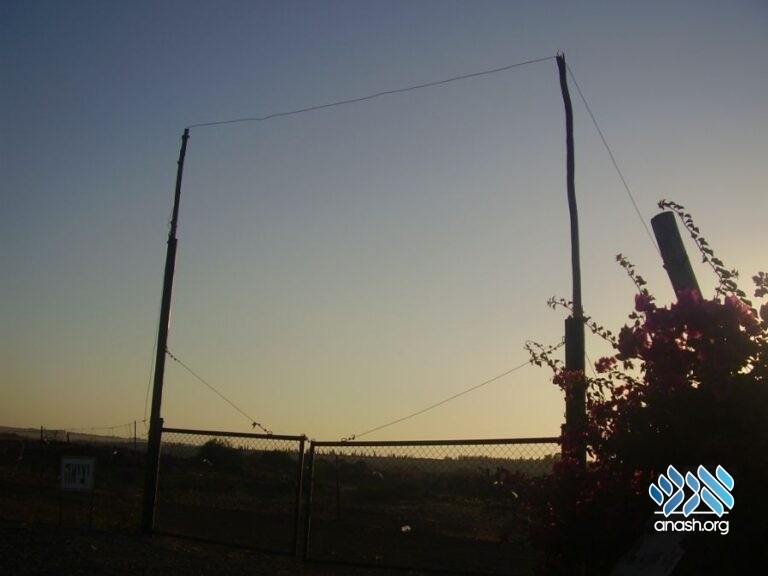Ask the Rov: What are the challenges to the kashrus of a small town eruv?
By Rabbi Chaim Hillel Raskin – Rov of Anash in Petach Tikvah
In those cases where a town eruv is halachically feasible, extra care must be given to the checking and maintenance of the eruv by a qualified mashgiach. An eruv cannot be made once; rather, it must be continuously maintained and updated, as changes are constantly being made by the city and utility companies and pesulim are common. An eruv that isn’t properly maintained is meaningless.
Halacha says that while a tzuras hapesach (“doorway” eruv) can enclose a karmelis, to permit a bona fide reshus harabim, it is necessary to have solid walls with doors at the entrance. There is a dispute among the Rishonim as to what constitutes a reshus harabim:
Some say that it is any street that is 16 amos wide (approx. 24 feet), similar to the roads in the midbar which were wide enough to contain the mishkan’s wagons.1 Others add a condition that 600,000 people use the streets, like the roads in the midbar that were used by all Yidden (counting those explicitly mentioned by the passuk).
While the Mechaber in Shulchan Aruch considers every 16 ama street a reshus harabim, necessitating proper walls, the Rama considers it a karmelis if there aren’t 600,000 people. The Alter Rebbe records the widespread practice to allow the construction of an eruv where there are no 600,000 people, but says that a yirei Shomayim should not allow a pole-and-string eruv on any 16 ama street.2
Halacha says that fields or bodies of water within an eruv (larger than 1375 square yards – beis s’osa’im) invalidate it since an eruv only works around living space.3 Parks with large areas of bushes and flowers where people aren’t meant to walk is questionable.4 It is therefore important to ensure that the eruv doesn’t include these types of areas.
Besides enclosing the area, Chazal required an eruv chatzeiros to unite all residents within the space as one. When there are non-Jewish or non-religious neighbors, it is necessary to “rent” from the non-Jewish homeowners or someone else who has access to the homes. While some say that one can “rent” from utility companies, police, or government officials, it is questionable whether they are considered to really have access to private homes to be able to “rent” them (see issue 425 at length).
If an eruv breaks in the middle of Shabbos, it becomes immediately prohibited to carry. Even one distorted tzuras hapesach can invalidate an entire eruv. An eruv should be checked weekly, and it is assumed to stay kosher unless there was a heavy storm.
Due to these reasons and others – such as people forgetting the prohibition of carrying on Shabbos or poor hashgacha – the Rebbe often discouraged the construction and use of community eruvin. The Rebbe predicated the construction of an eruv on the support of local rabbonim, who will weigh the gain against the loss.5 One who feels the need to use a small town eruv should investigate it thoroughly as they would for the kashrus of anything else.
See Sources (open PDF)
From The Weekly Farbrengen by Merkaz Anash

Discussion
We appreciate your feedback. If you have any additional information to contribute to this article, it will be added below.